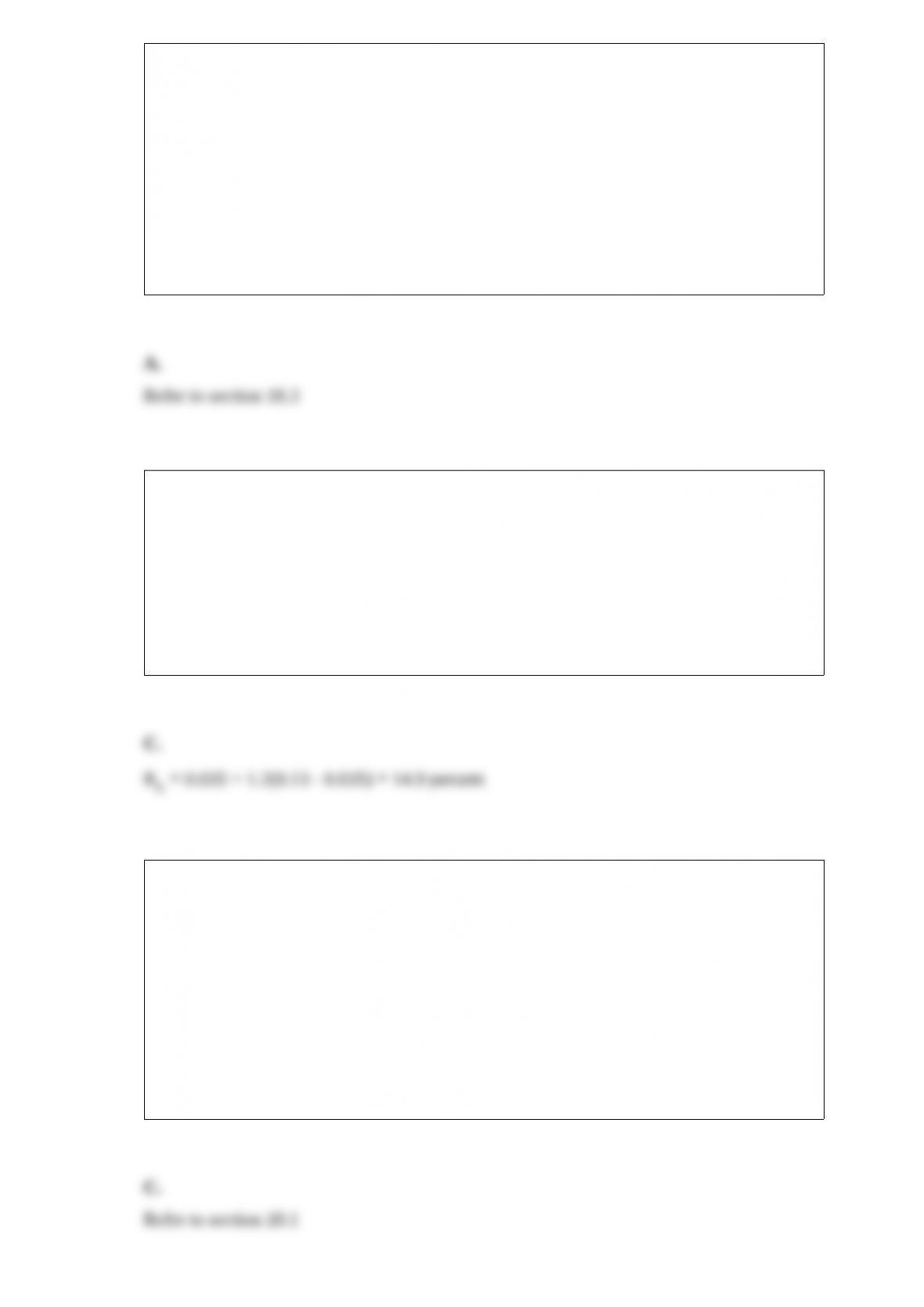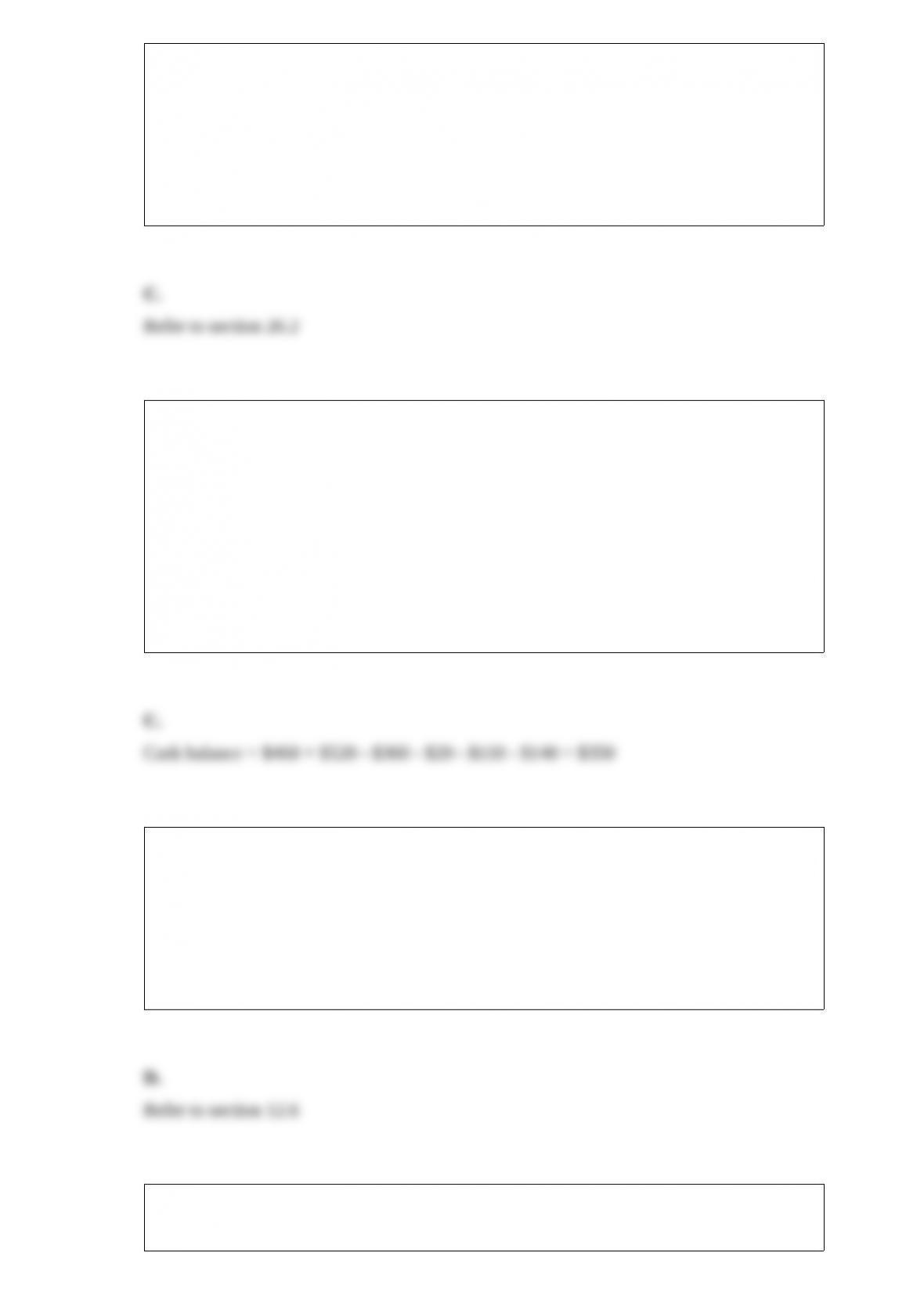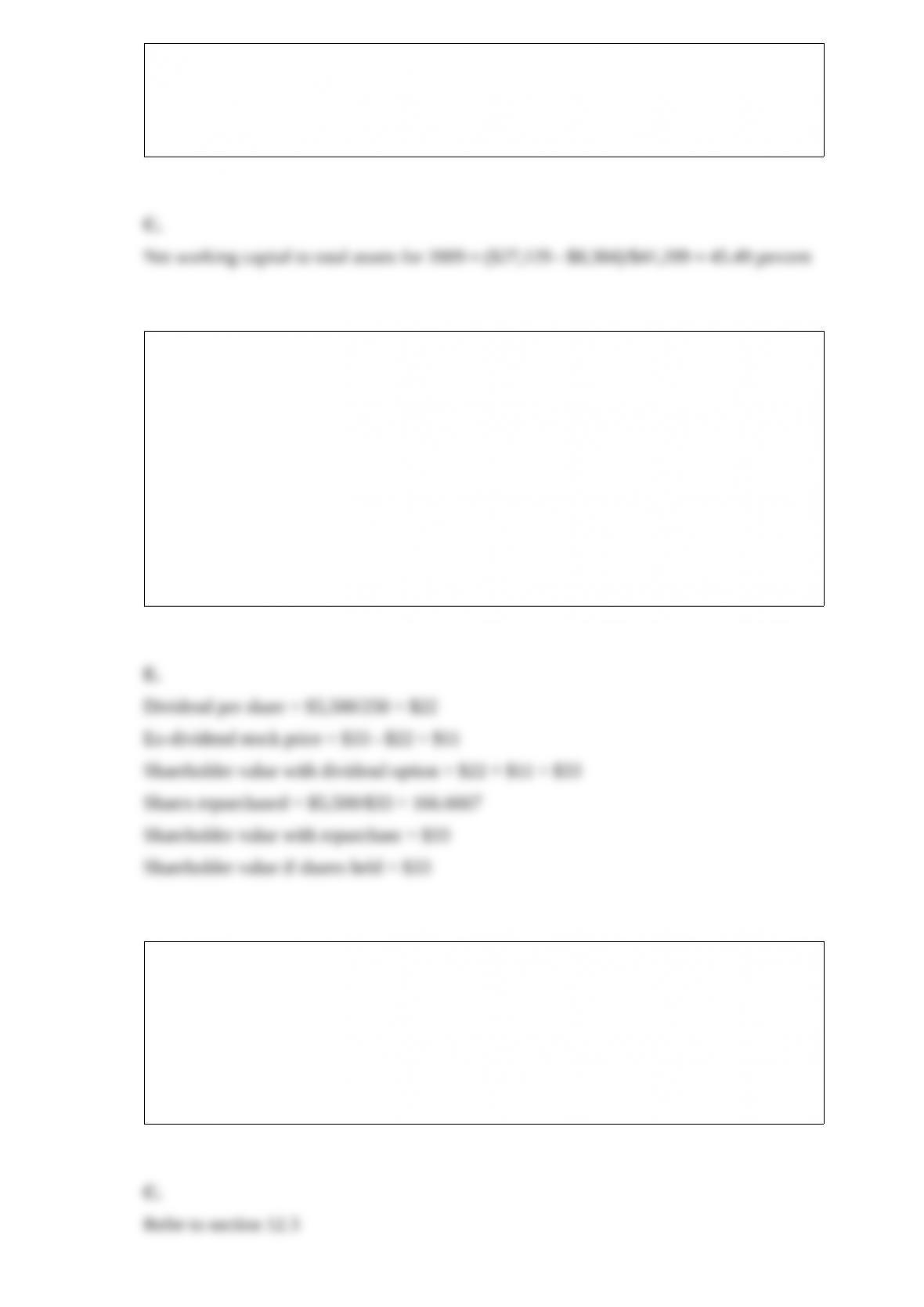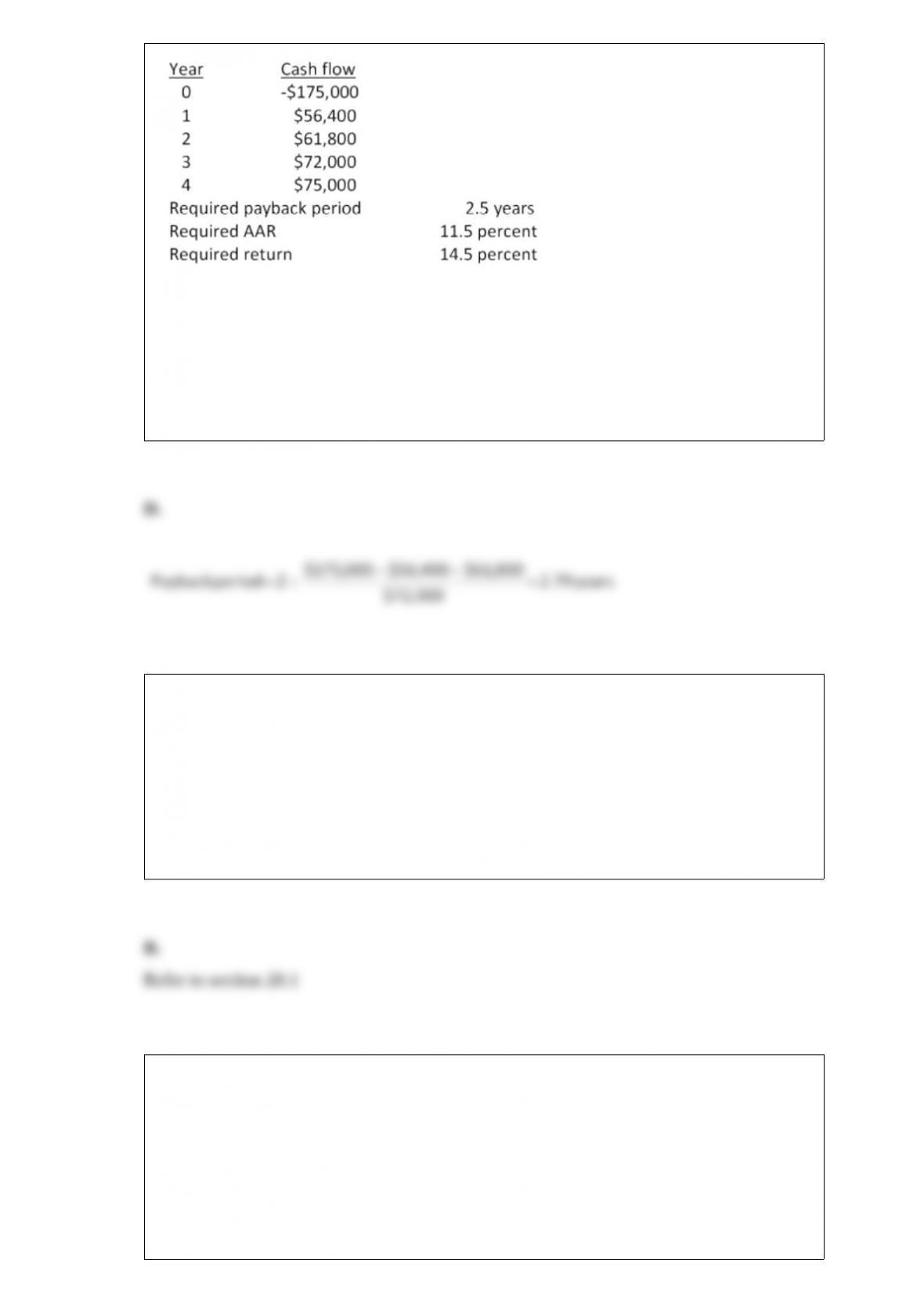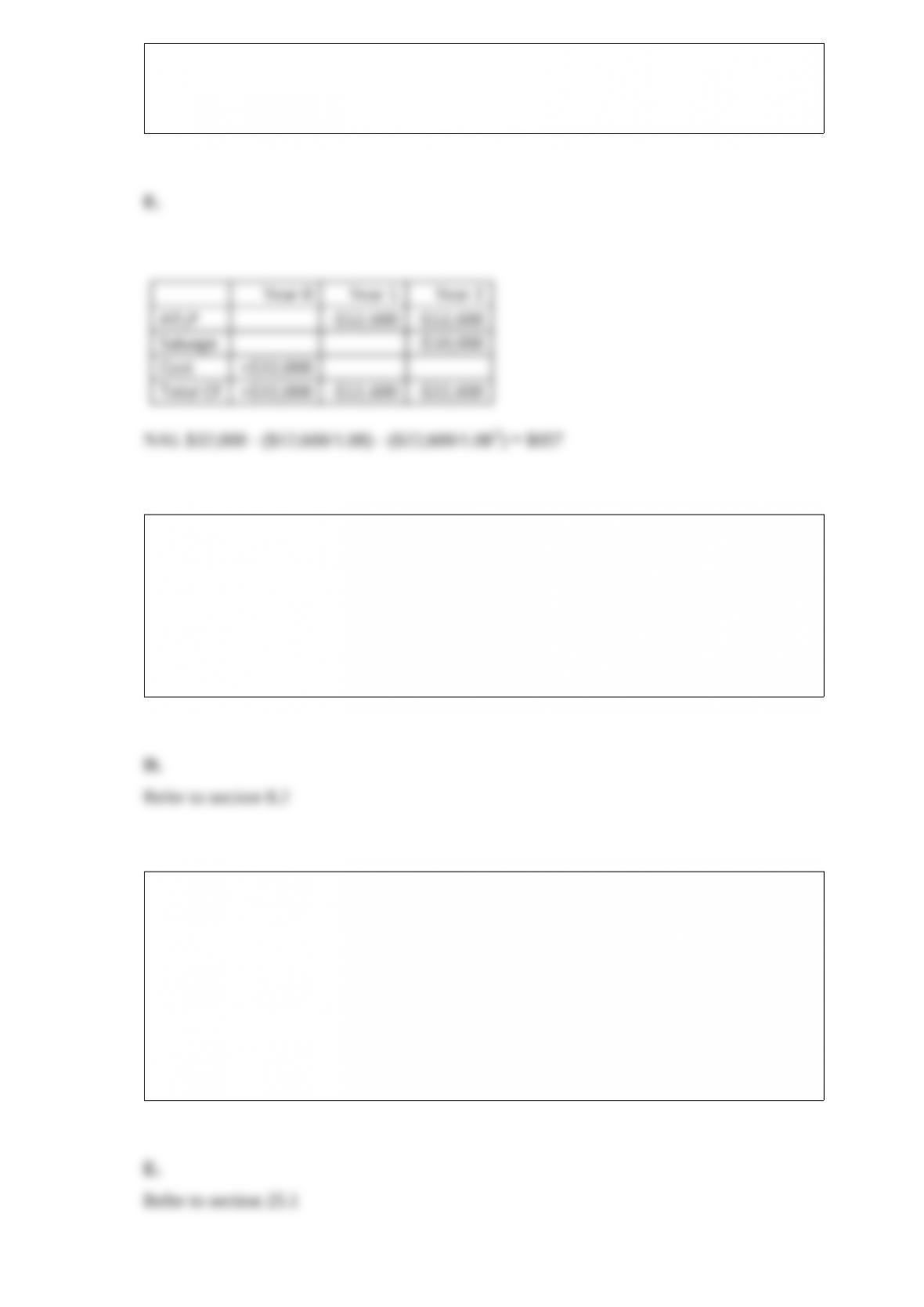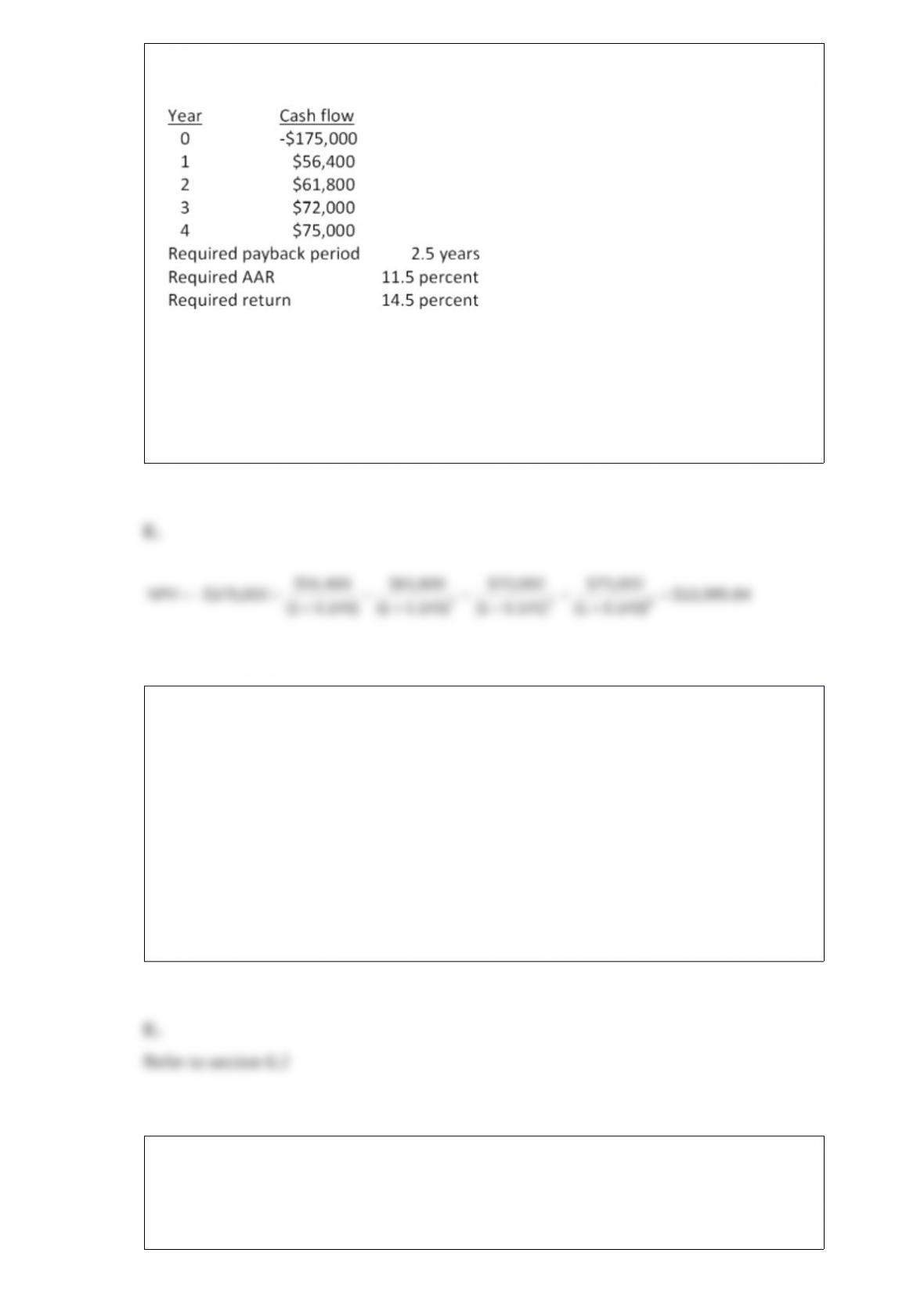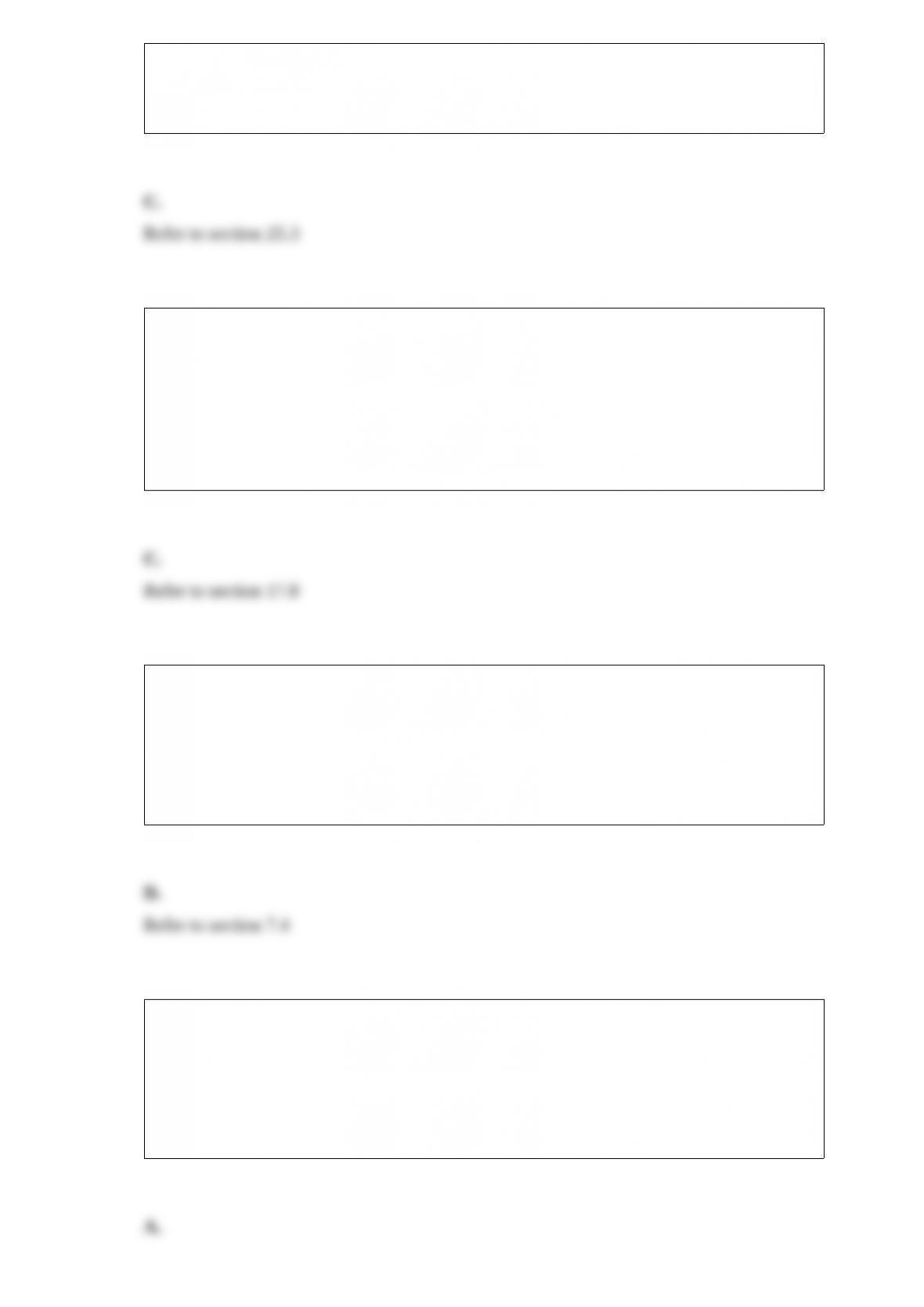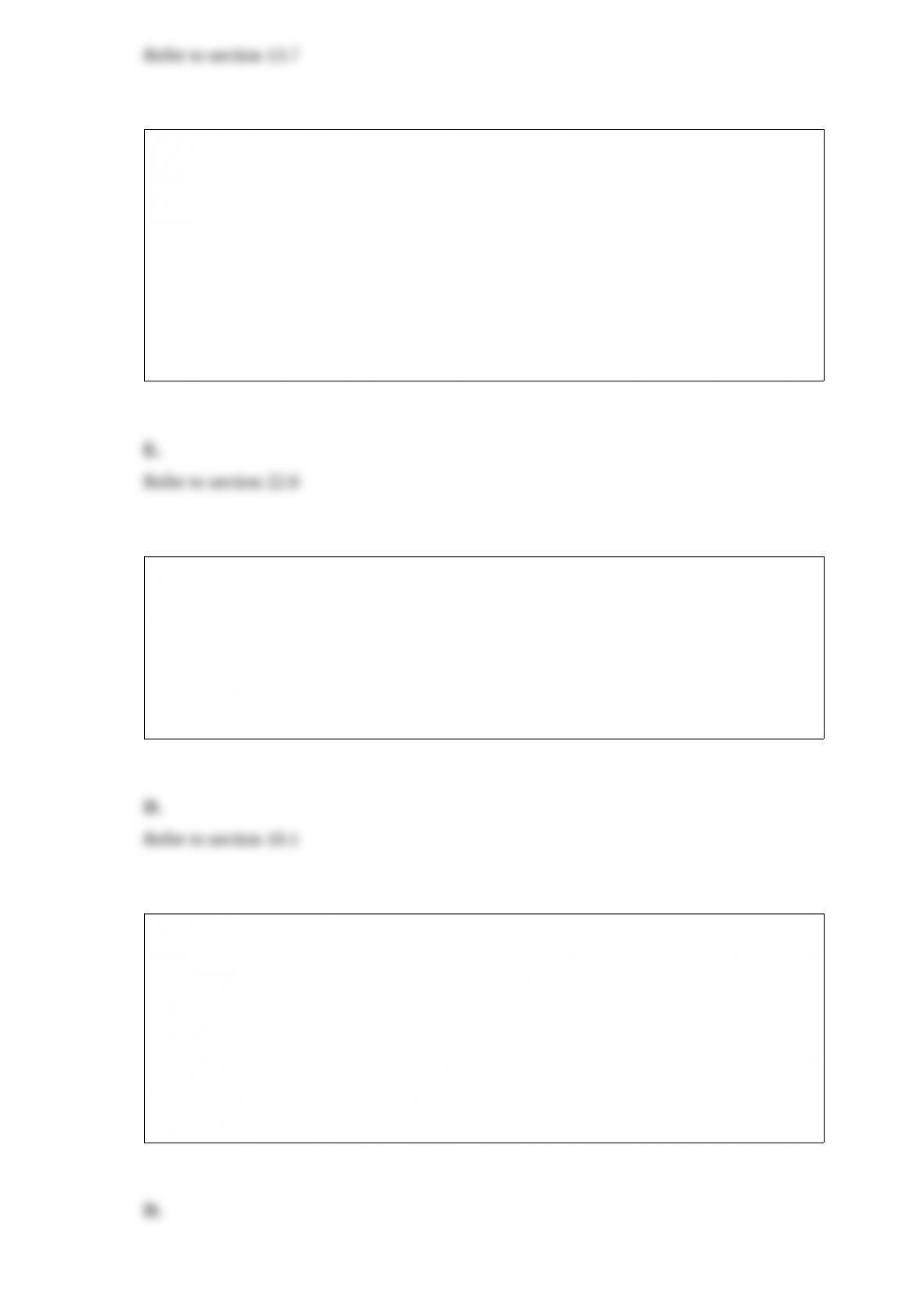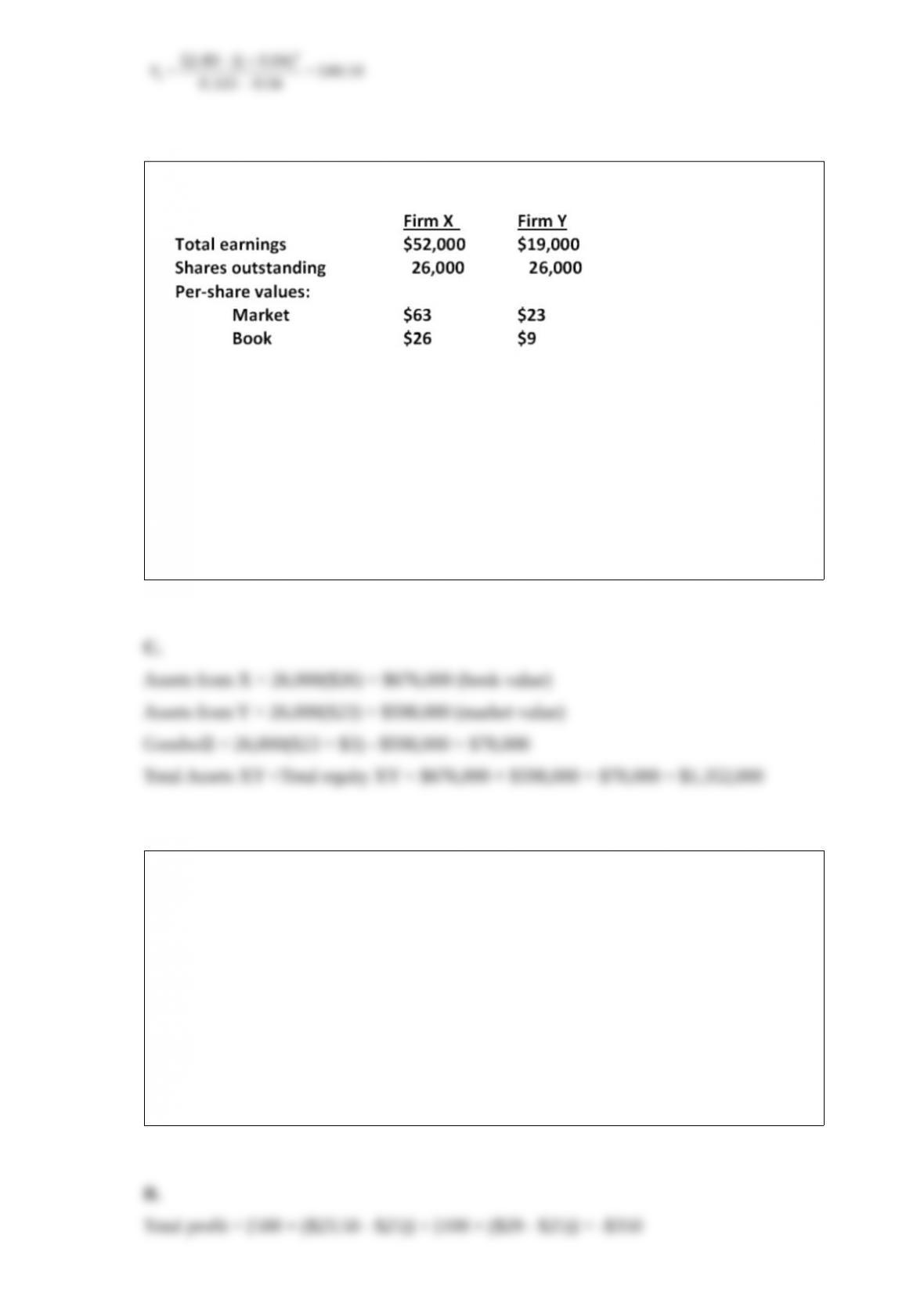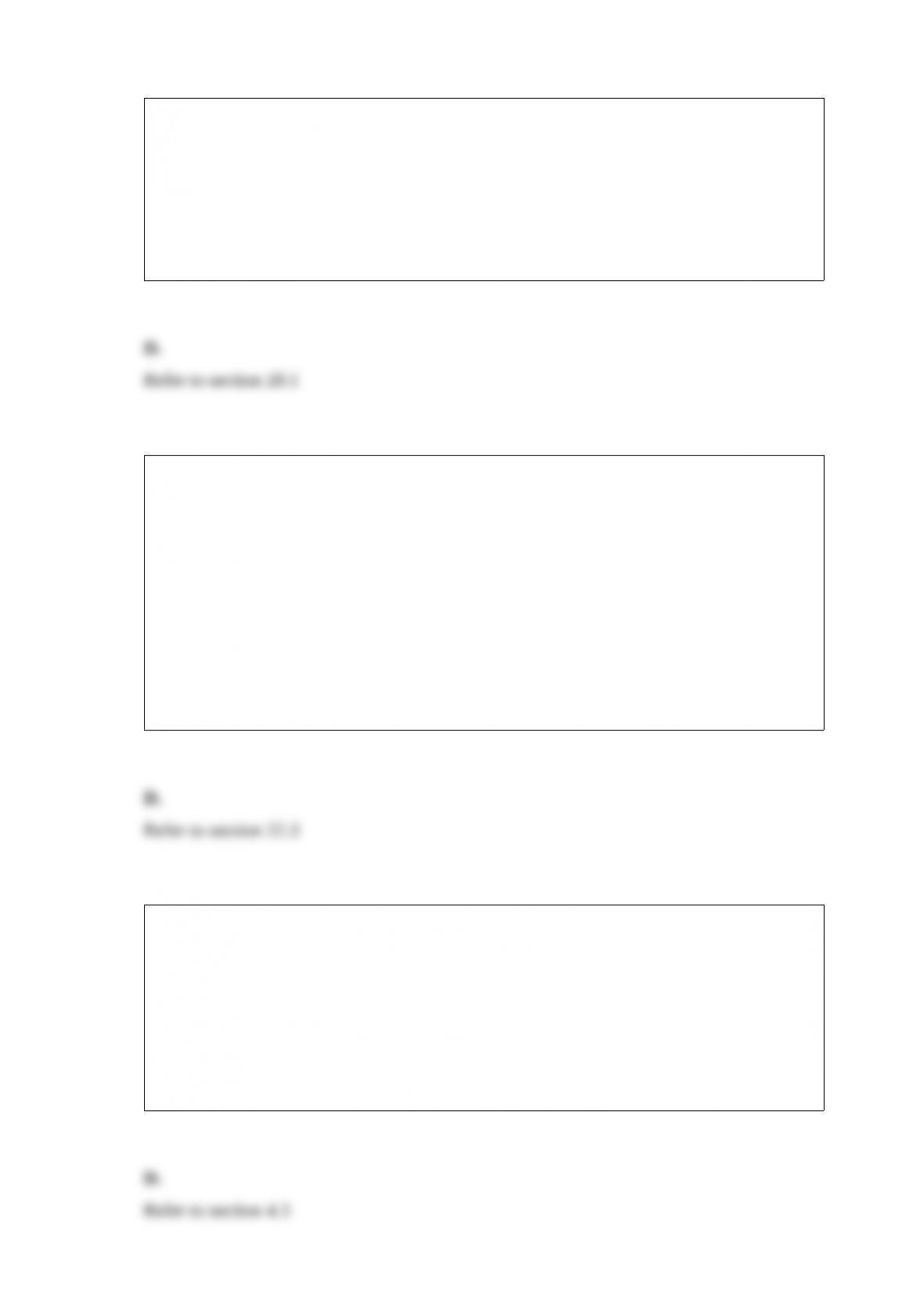In a tax-free acquisition, the shareholders of the target firm:
A. receive income which is considered to be tax-exempt.
B. gift their shares to a tax-exempt organization and therefore have no taxable gain.
C. are viewed as having exchanged shares on a dollar-for-dollar basis.
D. sell their shares to a qualifying entity thereby avoiding both income and capital gains
taxes.
E. sell their shares at cost thereby avoiding the capital gains tax.
As of the beginning of the quarter, Swenson's, Inc. had a cash balance of $460. During
the quarter, the company collected $520 from customers and paid suppliers $360. The
company also paid an interest payment of $20 and a tax payment of $110. In addition,
the company repaid $140 on its long-term debt. What is Callahan's cash balance at the
end of the quarter?
A. -$110
B. $320
C. $350
D. $430
E. $490
Which one of the following statements best defines the efficient market hypothesis?
A. Efficient markets limit competition.
B. Security prices in efficient markets remain steady as new information becomes
available.
C. Mispriced securities are common in efficient markets.
D. All securities in an efficient market are zero net present value investments.
E. Profits are removed as a market incentive when markets become efficient.
What is the net working capital to total assets ratio for 2009?
A. 24.18 percent
